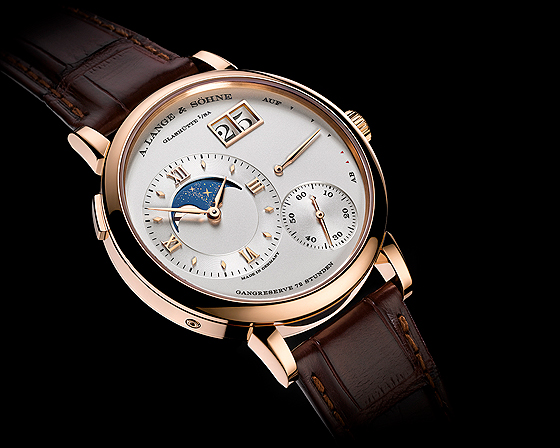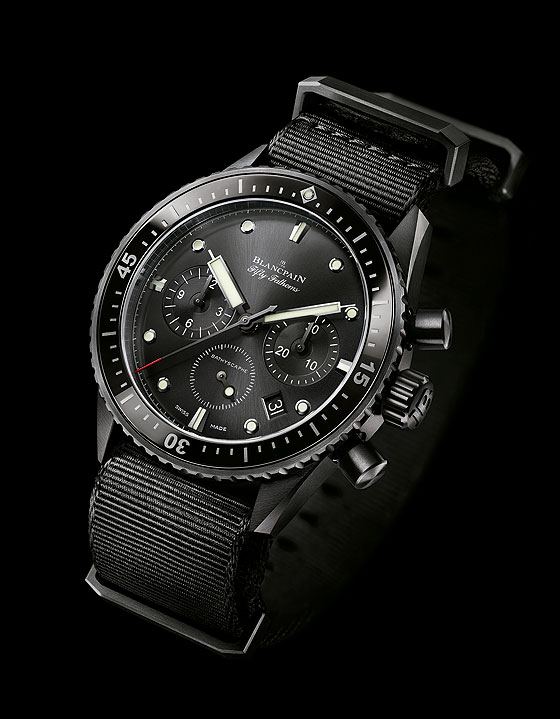 La sponsorizzazione marche di orologi di lusso per la serie di WatchTime "Inside Basel.Geneva" degli eventi collettore di orologi hanno davvero strutted loro roba quest'anno. Come notato dal partner dell'evento IBG di WatchTime, guardare collettore e aficionado Jeff Kingston, non solo ogni marca hanno una vasta selezione della sua collezione in mostra durante l'evento di apertura a Chicago - molto più ampia di quanto si potrebbe mai trovare in una boutique o l'altro rivenditore - ma del tasto di nuovi modelli di orologi da SIHH e Baselworld che non sarà nei negozi per alcuni mesi. Scorrere verso il basso per scoprire alcuni dei punti salienti, molti dei quali sono stati messi in luce in dettaglio sul WatchTime.com.
La sponsorizzazione marche di orologi di lusso per la serie di WatchTime "Inside Basel.Geneva" degli eventi collettore di orologi hanno davvero strutted loro roba quest'anno. Come notato dal partner dell'evento IBG di WatchTime, guardare collettore e aficionado Jeff Kingston, non solo ogni marca hanno una vasta selezione della sua collezione in mostra durante l'evento di apertura a Chicago - molto più ampia di quanto si potrebbe mai trovare in una boutique o l'altro rivenditore - ma del tasto di nuovi modelli di orologi da SIHH e Baselworld che non sarà nei negozi per alcuni mesi. Scorrere verso il basso per scoprire alcuni dei punti salienti, molti dei quali sono stati messi in luce in dettaglio sul WatchTime.com.
A. Lange & Söhne: Lange avevano tutti e tre i colori della sua nuova Grande Lange 1 Moonphase (platino, oro rosa e oro giallo). Naturalmente, il marchio di orologi di lusso da Glashütte, la Germania ha avuto anche un certo numero di Lange Datograph orologi in mostra, tra cui i primi tre rarità: una rosa-oro Lange Datograph Perpetual (tutti gli altri colori sono stati interrotti); una rosa-oro doppio Spalato (tutti gli altri sono esauriti), un orologio che chiede di essere indossato all'indietro in modo che il proprietario può contemplare il movimento; e, ultimo ma non meno importante, un disco di platino Lange Datograph Up-Down.


Blancpain: Questo marchio visualizzata una vasta gamma di Baselworld 2014 punti salienti: il nuovo Fifty Fathoms Batiscafo Flyback Chronograph , con il suo nuovo movimento con ruota a colonne a 5 Hz, sia la nuova cassa in ceramica e spazzolato cassa in acciaio; il Villeret Tourbillon, con la sua riserva notevole di 12 giorni di potenza (la riserva di carica più lunga per un tourbillon automatico) e quadrante in smalto; il nuovo, platino-carter, in edizione limitata Villeret perpetuo, con il suo quadrante in smalto e riserva di carica di otto giorni; il Villeret Carrousel Phase de Lune; e il nuovo Villeret Réveil GMT allarme orologi, in due colori. Insieme a "novità", quest'anno come sono di cui al mondo orologio, Blancpain ha portato anche una vasta gamma di orologi dalle sue collezioni esistenti.











